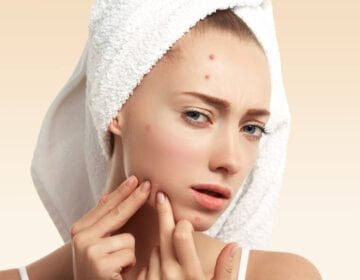
Hidden vitiligo causes and what triggers skin pigmentation loss
Vitiligo causes our skin to lose its pigmentation, resulting in lighter spots on different areas of the body. It affects people of all skin types and has a significant impact on the mind due to its visibility.
Unfortunately, this skin condition usually grows as you grow and age. Although vitiligo is mostly viewed as a skin condition, it also affects your hair, eyes, inner ear, and mucous membranes.
Vitiligo causes our skin to lose its natural colour pigmentation due to various reasons so let’s so them about today.
Vitiligo causes and their effects
Vitiligo is an autoimmune disease that attacks part of your body. Vitiligo appears with the death of melanocytes, the cells which are responsible for giving the skin and hair their colour. The most common type of vitiligo is known as generalized or nonsegmental vitiligo.
And, to date, some researchers say or prove what triggers the immune system. Man researchers also say that sunburn, emotional stress, exposure to chemical products, and alcohol also can trigger it. And, though this skin condition affects everyone equally, it’s more noticeable in dark-skinned people.
Autoimmune Response:
One of the main reasons for vitiligo causes is the autoimmune response, where the body’s immune system mistakenly destroys the melanocytes.
The melanocytes are the cells which are responsible for producing melanin, a pigment responsible for giving colour to your skin. But when these cells are destroyed, the skin loses its natural colour. This immune system dysfunction is one of the major common explanations for the development of this skin condition.
Vitiligo causes and effects on the skin:
When the melanocytes are attacked, patches of depigmentation appear on the skin. These patches usually vary in size and location, affecting any part of your body, including hands, legs, face, arms eyes, etc. This affected area of your skin becomes lighter than your actual skin colour more like completely white.




Genetic Predisposition
Yes, it says genetics plays a very important role in vitiligo development. So, people with a family history of autoimmune diseases or vitiligo are at high risk of developing skin conditions.
While it’s not yet guaranteed that someone will inherit vitiligo, certain genetic factors do indeed make a person more vulnerable to the condition. A genetic predisposition doesn’t mean you will have vitiligo for sure, but surely increases your chances of having it.
Emotional Stress
Although it’s not a direct cause, stress contributes to its worsening. Your stress impacts our immune system and triggers autoimmune responses in people who are already genetically predisposed.
Major live events, anxiety, emotional stress, and trauma are all believed to be the link to the appearance of vitiligo or worsening it.
So, it’s important to manage your stress so that it does not lead to or spread your existing patches.
Oxidative stress
Oxidative stress means when free radicals and antioxidants in the human body are out of balance which results in cell damage, including melanocytes. This imbalance damages cells, including melanocytes which support the appearance of vitiligo.
What are the symptoms of vitiligo?
There are several symptoms of vitiligo, which include:
- Premature whitening of hair, eyebrows, facial hair or eyelashes.
- Small white patches or well-defined large white patches on the skin.
- Loss of pigment in the mucous membranes, also including the inner lining of lips, mouth, nose, etc..
However, these white patches will not cause any discomfort, soreness, irritation, dryness of the mouth, etc. it’s more prone to sunburn. This vitiligo affects different individuals some people have only a few white patches that no longer grow while others may have larger patches that grow as they age.
Some people can also experience hearing loss, loss of eye pigmentation, and other autoimmune diseases such as anaemia, weakness, thyroid disease, etc.
Types of Vitiligo
Below are some of the most common types of vitiligo(skin disorder). But before we start to share the information, please know that the below descriptions are just to give you general knowledge of what each type may look like.
So, don’t try to diagnose your vitiligo with the below information, please consult your dermatologist to find out what kind of vitiligo you have. Because only a medical professional can give you fact information looking at your report.
Generalized
It is the most common type of vitiligo which usually starts on the hands, feet, or around the eyes and develops as you grow. This skin disorder appears symmetrically on both sides of the body like both sides of the hands, feet, or face.
It can be both active and progressive and non-progressive. Usually, this generalized vitiligo is reactive to medical therapies, especially if the treatments are started early (more like before 12 months of the first appearance of the spot).
Segmental
It is another one on the list of common vitiligo types. This type of vitiligo affects only one side of the body part without crossing the middle line such as the stomach, leg, hands, face, etc.
It is also said that this type of vitiligo progresses rapidly for 6 months to about 24 months and then fully stops afterwards. After this certain period, segmental vitiligo does not spread further.
There are other types of vitiligo which are considered subtypes, they are:
Focal Vitiligo:
This is a rare type of vitiligo which develops in small patches (the skin loses its pigmentation in small, tiny areas). According to medical experts, if it does not spread or change within 1 to 2 years periods, it is known as focal vitiligo.
Mucosal Vitiligo:
This type of vitiligo affects only the mucous membranes which are often in the mouths or genitals.
Trichrome
This type of vitiligo is also known as a clinical variant of vitiligo and has a colour appearance. It appears like a central part of white depigmentation, the normal skin colour and a lighter colour between these two.
So, these three different colours make a unique appearance on the patient’s body. This is one of the most active types of vitiligo so it needs to be treated as soon as possible.
Universal Vitiligo:
This subtype of vitiligo is also a rare type that covers most of our body, about 80% with depigmentation.
Mixed:
This rare type of vitiligo can cause a person to have both nonsegmental and segmental vitiligo.
When should I see my doctor?
You should see your health care provider or doctor if any area of your body, hair, or mucous membranes starts losing its colour. Though vitiligo has no permanent cure treatment is necessary to slow down its rapid spread.
Treatment
The treatment for vitiligo depends on what type of vitiligo you are suffering from your age how quickly it spreads, and so on.
So, after looking up all these things, doctors sometimes recommend medication and light-based therapies, which help to restore skin pigmentation or even out the skin tone. But sometimes, your healthcare might also suggest drugs, surgery, or therapies, depending on the type and seriousness of your vitiligo.
Along with all these medical treatments, you also need to take care of your skin health overall. For example, protect yourself from sunlight, use makeup in affected skin areas, and don’t forget to apply and reapply your sunscreen.
FAQ’S
What is the main cause of vitiligo?
Vitiligo causes because melanocytes die or stop producing melanin which is responsible for skin and hair color. To date, there are no exact facts to say that these things cause the pigment cells to die or stop producing melanin.
Can stress be the reason for vitiligo?
Stress alone cannot be the reason for vitiligo cause; however, it can support or worsen the condition. All physical or emotional stress can impact immune system function, leading to loss of skin colour.
Is vitiligo hereditary?
Yes, vitiligo can run in families down the history. If anyone in the family has it, there’s a high chance that you can also have it. However, not everyone has it just family history.
Why does vitiligo spread?
There are various factors that support the spread of vitiligo and they are stress, skin trauma, hormonal changes such as pregnancy, puberty, oxidative stress, sunburn, etc.
Is Vitiligo Contagious?
No, it is not contagious meaning vitiligo does not spread through physical contact or other means.













